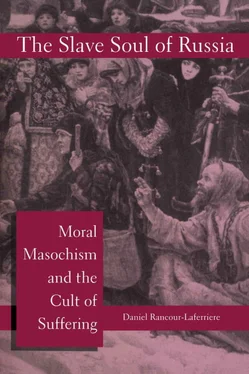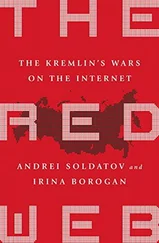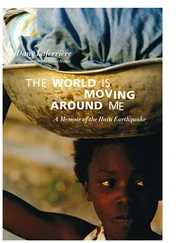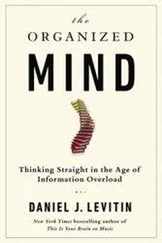This sense of the nation as a personality , which has been expressed by individuals, corresponds with and confirms the people’s awareness of its identity as embodied in folklore. Its image covertly governs our speech, for when we speak of the “dignity” of the people, its “duty,” its “sins” or its “responsibility,” we are making concrete, that is to say, unmetaphorical, use of terms that are applicable only to the moral life of a person . 45
On the contrary, such usage is highly metaphorical, or, to be rhetorically precise, such usage constitutes the device of personification (Greek prosopopoeia , literally “face making”). A nation is not literally a person. A population of persons in a specific geographical area is not itself a person or a personality. It merely acquires some attributes of a person in the minds of its citizens (and the attributes it acquires reveal much about these minds). In the opinion of Russian philosopher Nikolai Berdiaev, anyone who actually falls for the idea that a given nation is a person (“lichnost’”) is a nationalist, and is in some sense enslaved by that nation. 46
The personification of a nation occurs in other countries besides Russia, of course, and is generally familiar to psychoanalysts:
We tend to regard our native land as a great mother who brings into being, nourishes, protects and cherishes her sons and daughters and inspires them with love and respect for herself and her traditions, customs, beliefs and institutions; in return for which her children are prepared to work and fight for her—and above all to protect her from her enemies; a good deal of the horror and disgust which is inspired by the idea of an invasion of one’s native land by a hostile army being due to an unconscious tendency to regard such an invasion as a desecration and violation of the mother. 47
There is a fairly extensive psychoanalytic literature on the personification of countries and other groups. 48The (mostly non-psychoanalytic) literature specifically on “Mother Russia” is truly enormous, as will be seen below in chapter 7. Given the importance of parental imagery for characterizing Russia, it is not surprising that there is also a substantial (again, mostly non-psychoanalytic) literature characterizing the inhabitants of that country as collectively childlike, infantile, juvenile, adolescent, etc. 49
Ultimately it is the real persons inhabiting personified Russia who are my quarry. Any personifying tropes these persons may create regarding their collective identity will here be read as projections or externalizations. The locus of the Russian culture of moral masochism is the mind of the individual Russian. For example, the unfortunate sufferings of “Mother Russia” and of her “true sons” cannot be understood without reference to the real sufferings of real mothers and real sons in a place called Russia.
TWO
Some Historical Highlights
I do not wish to relate the history of Russian masochism from the beginning, because the beginning is largely unknown. I also do not wish to tell this story in great detail, because it would be too distasteful for everyone involved, and besides there would not be nearly enough space in one volume. Nonetheless it is worthwhile at least to indicate some relevant high points, in roughly chronological sequence, before going into detail about specific, selected masochistic practices.
From the early days of Christian Rus’ (an East Slavic area occupied not by Russians properly speaking, but by “Rusians,” to use Horace Lunt’s linguistic neologism), 1there come reports of suffering welcomed by the sufferer. If, for example, the hagiographic accounts are to be believed, the princes Boris and Gleb permitted, even invited themselves to be murdered in 1015 by agents of their power-hungry elder brother, Sviatopolk. A variety of commentators have recognized the masochistic nature of this act (without using the psychoanalytic term). Soviet scholar S. S. Averintsev, for example, says that suffering was precisely what Boris and Gleb were up to (“Stradanie i est’ ikh delo”). 2Soviet semiotician V. N. Toporov terms the act a “paired sacrifice” and a “voluntary sacrifice.” 3Philosopher Nikolai Berdiaev calls it a “feat of nonresistance” in which the “idea of sacrifice” predominates. 4
Prince Iaropolk Isiaslavich, also assassinated by political enemies, is supposed to have uttered the following words: “O Lord my God! receive my prayer and grant me a death from another’s hand , like that of my kinsmen Boris and Gleb, so that I may wash away all my sins with my blood and escape this vain and troubled world and the snares of the devil.” 5To Prince Andrei Bogoliubskii, another political murder victim, are attributed these last words: “I thank Thee, Lord, that Thou hast humbled my soul…. And now, O Lord, if they shed my blood, join me to the choirs of Thy holy martyrs.” 6
Examples could be multiplied. These “passion-sufferers” (“strastoterptsy”) are legion in the chronicles and other documents from ancient Rus’. Holiness (“sviatost’”) was practically inseparable from sacrifice (“zhertva”) of some kind. 7Historian George Fedotov suspects that the accounts are distorted, however: “The voluntary character of the death is often contradicted by the circumstances related by the same author.” 8Many of the martyrdoms seem to have been concocted for political reasons. 9Nevertheless, the idea of nonresistance to evil spread far and wide, and according to Fedotov began to be taken as a “national Russian feature.” 10
Ancient religious tracts are full of advice on the value of self-abnegation and suffering. For example, the Izmaragd (Emerald , which originated in the fourteenth century) characterizes humility as “the mother of virtues,” advises children to serve their parents “with fear as a slave,” and tells wives to obey their husbands “in silence.” Misfortunes are sent by a loving God to give people an opportunity to save their souls or even gain glory: “Sorrows and pains make the sufferers glorious, as gold in fire becomes still brighter.” 11
The tradition of religious asceticism, which in Slavic lands began in about the tenth century and continues down to the present day, offers numerous examples of the active quest for suffering. The young Saint Theodosius (ca. 1108–74) mortified his flesh with iron chains hidden under his shirt, or exposed his body to stinging gnats. He was later known to sleep sitting, to eat a very meager diet, to beat his head against the floor while praying, etc. 12Fedotov says that the “relatively moderate ascetic exercises” ( sic ) of this saint were supplemented by constant labor, such as grinding wheat, cutting wood, or hauling water. 13
Saint Sergei of Radonezh (1314–92) wore uncouth garb, practiced heavy manual labor, would go for days without food, and adamantly refused to be elevated in the ecclesiastical hierarchy, according to his biographer Epiphanius the Wise. His holy ideal was poverty, and in this he “imitated his Master Jesus Christ our Lord.” 14
Saint Irinarkh of Rostov (d. 1616) always walked barefoot and wore chains and a hair shirt. Bolshakoff says: “After his death a collection of iron and copper chains, belts and helmets was found in his cell.” 15
Saint Seraphim of Sarov (1759–1833) was adept at fasting. One report has it that he ate nothing but grass for three years. 16When consulted by the holy woman Anastasiia Logacheva (1809–75) he recommended that she wear chains to quell her carnal lust. Anastasiia evidently followed this advice, for upon her death penitential chains were found beneath her clothing. 17
Читать дальше












